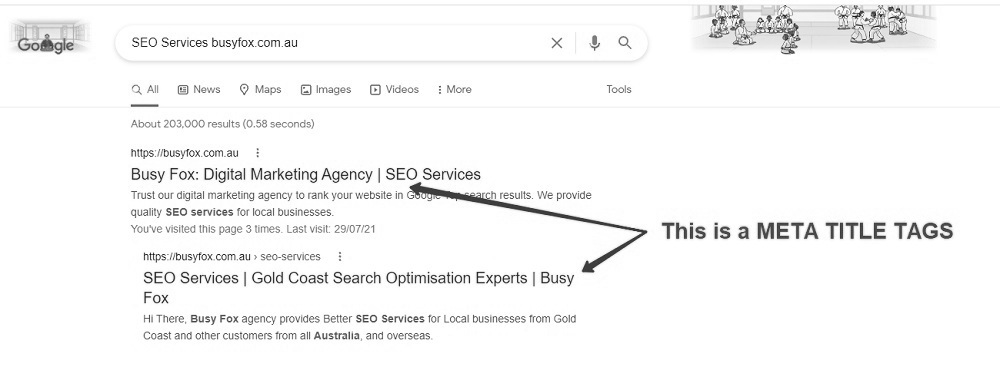
Meta Title Tags
Understand the Importance of Meta Title Tags – Does It Help SEO?
Meta tags are HTML features that define the web page for seekers and search engines. These features are used as tags in <head> segment of HTML document. The features include a title tag and Meta description.
The title tag tells the visitors and search engines an idea of what to expect on a given web page or post on your site. It is revealed in a concise but accurate way.
The title appears in different places across the web including –
- Your web browser tab.
- Pulled in as anchor text when shared on social media and other websites.
- In search engine results….highlighted as a blue link.
How to add a title tag?
- Add title tag in your websites HTML’s <head> segment.
- The majority of CMS or content management systems add in general settings.
- If SEO plugin is used add to SEO title section.
- When you write an article, the headline will automatically get added as a title tag.
Why Meta title tags are essential?
The Meta title tag is the boldest and most noticeable element in search results. It plays a crucial role in determining whether the seeker will click or not.
According to Google, it is not a direct ranking algorithm but its indirect advantages can help to enhance your position. Metadata is a summary of the web page content that engages the seekers to click-through and visit your site. If you show an informative and convincing Meta title & description, more and more seekers will possibly click through. Search engine like Google appreciates CTR [click through rates] and assumes your website offers best user experience. Therefore Google moves your site upwards in the result page.
How to write clickable Meta titles?
From an SEO perspective, include all the keywords you plan to rank for. The most crucial in the start followed by second most crucial and finally your business name.
Make sure you are writing title tags for people and not search engines. The tag must be optimized for search engines but make sense to people and seems authentic.
Checklist for title tag optimization
- Length – 50 to 60 characters including the spaces.
- Placement of keywords – Main keyword + secondary keyword.
- Brand name – Keep brand name at the title tags end if it is not included in crucial keyword phrases.
- Relevant – Ensure that the description is relevant to page content.
- Avoid duplicate title tags – Write every title tag uniquely suitable to every page. Never duplicate title tags as this can badly impact search visibility.
- Avoid stuffing keywords – stuffing keyword is a bad practice and can invite penalties.
- Create headline different from title tag – Different keyword wording of a page increases its chance to appear on different search intent.
Title tag examples
Good – Best Pizzas in America: 9 Yummy Topping You Don’t Desire To Miss
All three keywords are at the start of the title tag followed by an appealing headline. ‘Toppings’ is used smartly to avoid repetition and keep character limits to 60.
Bad – Pizzaland | America’s Best Pizzas
The crucial keywords and brand name are at the end of the title tag. The headline lacks a description. There is nothing persuasive to make users click. Such title tags are buried in the back pages of Google SERP.
Meta title tags and description communicate with search engines and people as well as is crucial for SEO!

